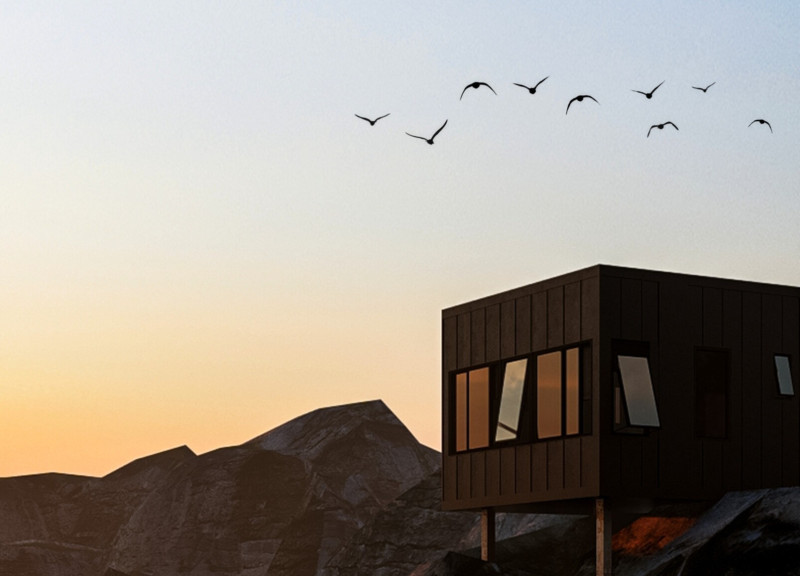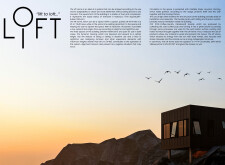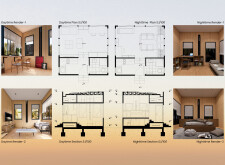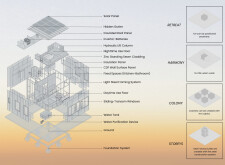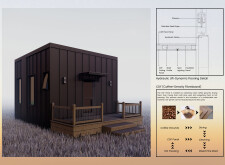5 key facts about this project
### Architectural Design Report: The Lift Home
#### Overview
The Lift Home is situated in both urban and rural contexts, designed to adapt to various living environments while prioritizing sustainability and flexibility in residential architecture. The project aims to provide a versatile living space that responds to diverse needs across different times of day, establishing a framework for inclusive and functional living. The architectural strategy focuses on maximizing a compact footprint while incorporating innovative design elements that enhance livability.
#### Spatial Configuration
The structural design is centered around a square form, encompassing 25 m² (5x5m) and emphasizing both practicality and symbolic significance. Unique features such as a Hydraulic Lift System allow for dynamic flooring that adjusts to accommodate different activities and user requirements. The layout includes fixed zones for essential rooms, including kitchen and bathroom areas, while facilitating an open, airy environment. Foldable steps improve accessibility, ensuring a smooth flow of movement throughout the space.
#### Material Selection
The material palette reflects a commitment to sustainability, integrating innovative components that promote environmental responsibility:
- **Light Steel Framing** serves as the foundational structure, ensuring rapid assembly and durability.
- **Coffee-Density Fiberboard (CDF)**, made from recycled coffee grounds, contributes to the eco-friendly ethos, used in wall panels and flooring.
- **Zinc Standing Seam Cladding** offers robustness and weather resistance, enhancing both visual appeal and performance.
- An **Insulated Roof Panel** supports effective thermal regulation, optimizing comfort throughout varying weather conditions.
- **Solar Panels with Inverter-Batteries** enable off-grid functionality, harnessing renewable energy for sustainable living.
- The **Hydraulic Lift Column** exemplifies engineering innovation while enhancing the adaptability of residential spaces.
The Lift Home's architectural approach integrates advanced design techniques and sustainable practices, addressing contemporary challenges in the residential sector while setting a precedent for future developments in adaptable living environments.


